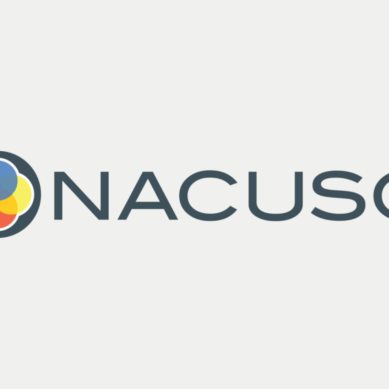Financial literacy is a key component in helping members build better financial habits and achieve financial wellness. Given that credit unions exist for the sole purpose of supporting their members’ financial wellbeing, it’s not hyperbole to argue that providing financial education is one of a credit union’s most important roles. Financial literacy and education are so vital to the foundation of credit unions, that it claims the number five spot of the Cooperative Principles—our guiding doctrine.
While credit unions take this duty seriously, they often approach their financial literacy materials with a “set it and forget it” mindset—throwing a handful of financial tools on their website and calling it a day. Maybe in April, for Financial Literacy Month, they’ll publish some general money tips and share information on their products, but it doesn’t tend to go much further.
But as we’ve discussed before, as the times change, our approach to education must change as well to meet the needs and methods of the upcoming generations. With the induction of new technology and new teaching mediums, younger Millennials and much of Gen Z (and even Gen Alpha, if we are looking that far ahead) prefer education systems that connect with them where they are. There’s a reason TikTok and gamifying apps such as Zogo are collecting financial education pursuers in droves.
It’s time for credit unions to pack away their outdated educational materials and seek out modern ways of reaching younger audiences where they are to ignite a financial rebellion.
Meet Todd Romer and the Young Money University

Todd Romer
Todd Romer, renowned financial speaker and coach, felt the pull to reinvent the way we approach financial literacy all the way back in 1999, when he founded the financial literacy publication, Young Money, targeted toward creating accessible, digestible financial education for young adults on their own for the first time. During its tenure, millions of copies of the Young Money magazine were distributed across over 150 college campuses nationwide, creating a reputable and trustworthy brand amongst young adults.
As the times changed, so did Young Money, which eventually rebranded to Young Money University. During this time, the print publication shifted to a digital newsletter and website, amassing a following of over 5,000 subscribers. However, the on-campus presence of Romer’s program remained, as he began his Financial Rebellion speaking tour for students, student athletes, and other young adults.
The key to Romer’s success is not by educating participants on budgeting or credit scores but instead showing them how they can become “financially rebellious”—the thesis of Romer’s program.
“To be financially rebellious is to rebel against general financial education in America that hasn’t been working for decades,” says Romer. “Young people are trying to figure out how to do money differently to live a life they desire with less stress, more financial confidence, and to do what the wealthy are doing by learning about investing, how to start side hustles, and how to think entrepreneurially. Rebelling against traditional money norms to build the life they want—that’s really what Financial Rebellion is about.”
Outside of financial speaking, Romer engages with younger generations on TikTok and through his Financial Rebellion podcast, perfectly showcasing the need for educators to meet everyday users where they are, on the systems they’re on, and how individuals are willing and eager to engage with brands that do so.
CUSO Magazine’s Emily Claus sat down with Romer to learn more about how credit unions can help cultivate a financial rebellion and reach younger generations in more efficient and more impactful ways.
How Young Money University does money differently
The underlying issue with traditional financial education models is that they are often one-size-fits-all, surface-level methods that fail to address poor habits and the needs of the specific individual. Teaching members about credit scores can be helpful, but it doesn’t change their approach to money or get to the root of their financial issues. It’s often a Band-Aid to cover a bullet wound.
This is where Young Money University aims to “do money differently,” by meeting young adults where they are and letting them express their concerns, learn how to meet their goals, and reshape their ideas about money.
“We focus on a money mindset. That’s part of our beginning stages of teaching money differently,” Romer notes. “To be financially rebellious is to understand that most of us have an average-to-poor money mindset based on how we grew up. We have a money DNA that was formed based on those early years. We teach how to erase or mitigate or minimize some limiting beliefs about money and limiting beliefs about oneself.”
Those limiting beliefs can be half the battle when it comes to finances, Romer argues, as one of the largest barriers keeping people from seeking out financial literacy is the fear of looking or feeling stupid or realizing that despite their desire to learn and grow their finances by investing, starting a business, or simply changing their money habits, they lack an inherent ability to do so.
“We’ve seen so many young people raise their hands and say, ‘I don’t know if I’m smart enough or capable enough to be financially successful.’ We eliminate those lies. We tell them that is completely not relevant at all. Some young people tell us, ‘I have a money mindset that says I may not be disciplined or focused enough to be financially successful and reach my dreams. And I may not be worthy or deserving enough.’ We work to help change those mindsets, and that’s a big deal.”
Method, means, and medium are chief considerations when having financial conversations with young adults. Instead of posting general information on your website and hoping a member takes the initiative to reach out and find it, Young Money University reaches out to them—both digitally via their newsletter and their social media pages and physically by hosting their speaking tour on college campuses—and lets the individual lead the conversation regarding their specific money needs and concerns.
“We take the approach of meeting them where they are and providing them with the information they need,” says Romer. “Instead of saying, ‘Here’s a one-on-one class on what credit scores are, come learn.’ It’s asking, ‘What are you concerned about and how can we mitigate that concern?’ Which is a very interesting and very helpful approach for young people.”
How credit unions can get involved
For credit unions looking to bring a fresh and deeper perspective to their financial literacy program while simultaneously reaching younger audiences across the country, they can partner with Young Money University to both support their current members’ financial health and bring in new members.
Credit unions can collaborate with Romer on his Young Money University speaking tour by sponsoring events in their field of membership. As these talks take place on college campuses, they are a great opportunity to reach a notoriously difficult and untrusting consumer base and ensure they connect your credit union with financial wellbeing. Romer and his team serve to break down the wall between the credit union and students, enabling them to connect in a more authentic and less sales-driven manner.
“We reach out to colleges and universities on behalf of the credit union for the speaking tour. That is typically a 45-minute presentation, whether that’s in a classroom or an auditorium on the campuses of any college or university in the footprint of a partner credit union. We do the legwork of setting those presentations out while the credit union benefits from being seen. They can have a representative there, or they can have a QR code at the end saying ‘If you want to know more about ABC Credit Union, for example, then here’s how you can become a member.’ It’s very passive, not in-your-face selling at all, but it is received super, super well.”
Credit unions can also market themselves in the Financial Rebellion newsletter, which is distributed twice per week, to reach YMU’s readership and target demographic. Ads in the newsletter are geotargeted, meaning credit unions will appear only to those readers in their field of membership. Furthermore, Young Money University offers books and materials for credit unions to distribute to members or at community events to market to potential members. Todd Romer’s new book, Financial Rebellion, launching this Fall, will be available for credit unions to distribute to members as well.
Ultimately, no matter how credit unions choose to engage with Young Money University, YMU can serve as the connector between credit unions, younger generations, and the financial future they desire.
“The key here for any credit union is that Young Money University can be any credit union’s fractional Chief Engagement Officer, meaning we will engage on your behalf with that young adult market that you so deeply desire to have. Membership growth with young adults is probably the number one goal of any credit union. I hear credit unions consistently asking, ‘How do we drive younger membership growth?’ This is how. We can be that fractional Chief Engagement Officer to drive the interest and engagement of young people and help them realize the credit union can get them to a life they desire, financially.”
We must adapt
While credit unions shouldn’t shy away from continuing to teach the basics of financial education to their members. This financial rebellion, as Romer puts it, has been a long time coming as changes in the financial landscape, technology, and consumer behavior have altered the way members best learn and absorb financial information. Long gone are the days when a PowerPoint or true or false quiz would be considered sufficient educational support.
Credit unions that adapt to the changing times by answering the financial questions of the younger generations in a manner and medium that works for them may find that the membership growth they seek will come along with it. But credit unions should take care not to dilly dally in achieving this task, as the Great Wealth Transfer—the shifting of wealth from older generations to younger—is already underway. How are you bringing in these young adults?
“Time is ticking,” Romer concludes. “Credit unions of all sizes need to focus on how they are going to get this younger generation to become members of the credit union, and we strongly believe the biggest marketing tool that any credit union has right now is through legit, relevant financial education. Young Money University is the solution to bring them into your credit union.”
Credit unions interested in learning more or wanting to collaborate can go to the Young Money University website or email Todd Romer at tromer@youngmoneyuniversity.com.





















































